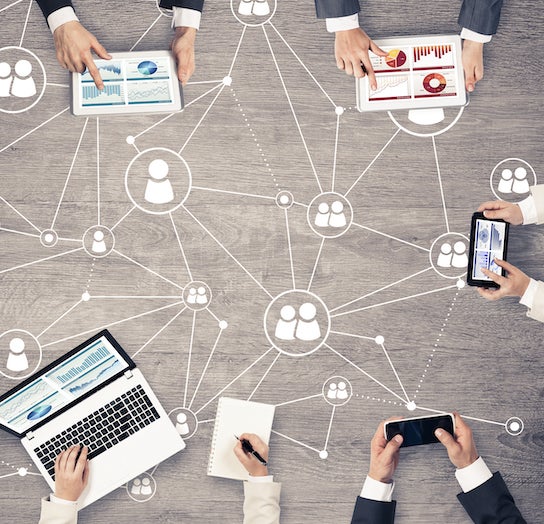How HCM Tech Can Bridge the Workplace Generational Gap
Monday August 2nd, 2021
Estimated time to read: 2 minutes, 45 seconds

Generational diversity can strengthen workplace productivity and foster a unique environment of ideation and collaboration – but it can also come with its fair share of challenges due to the different set of expectations for the workplace from Baby Boomers, Gen X, Millennials and Gen Z.
To meet the expectations of a multigenerational workforce, it is important for businesses to have the right supporting technology. When it comes to the employee journey, an intelligently connected human capital management (HCM) platform that provides intuitive, consumer-like experiences makes it simple for colleagues of all generations to connect, learn and access the important information they need. Here are a few examples:
Onboarding
While most generations are familiar with the onboarding tasks required when starting at a new job, younger generations are likely to expect a streamlined – and digital – process. After all, both Millennials and Gen Z grew up during a time when social media was born and smartphones emerged in the market.
An HCM platform that enables human resources (HR) teams to provide new hires with a single sign-on solution to complete their “paperwork” before the first day of work is a win for employers and employees alike. In fact, employers who were interviewed for Forrester Consulting’s Total Economic Impact (TEI) study of isolved People Cloud expressed that this type of functionality is beneficial in attracting a next-generation workforce, even providing a competitive advantage when hiring new talent.
Core HR (Scheduling, Payroll, Benefits, etc.)
When it comes to core HR needs – such as schedules, payroll and benefits – every generation simply wants access to the important information they need, when they need it. In the past this required a lot of coordination from HR departments. For instance, employees needed to ask HR for access to their W-2s or wait for schedules to be posted to know what shifts they were responsible for. With an intelligently connected HCM platform, however, all of this information is available to employees via single sign on and with just a few clicks – including benefit elections, access to pay history, the ability to download tax forms, check schedules, request time off and more. Companies can even take this further if corporate social responsibility is embedded in their HCM platform, as year-end tax statements can be downloaded and donations can be taken straight from a person’s check.
When technology is intuitive with a user-friendly interface, employees of all generations can navigate the system with ease to find the information that they need. What’s more, Forrester’s TEI report found organizations that were able to avoid replacement of physical timeclocks eliminated $36,000 in expenses on average. These organizations also found other benefits in enabling their employees to clock in and out via mobile phones and computers, especially those with a distributed workforce.
Collaboration
Employees of all departments – and generations – need the ability to connect and collaborate with each other. While in-person meetings are certainly important, teams need to be able to communicate virtually too.
Since most generations are familiar with Facebook (data from Pew Research shows that 60 percent of Boomers use Facebook), equipping workforces with an HCM that provides tools with familiar functions – such as posting, liking, sharing and commenting – can improve digital collaboration between teammates and age groups. This also helps to foster an environment where employees are engaged, which can have a positive impact on overall employee experience within an organization.
Development
One thing that most generations can agree on is that professional development is important. In fact, in isolved’s HR Trends report, learning was identified as the top way employees would like to be engaged with by their employers this year. Because of this, an HCM with an integrated learning management system (LMS) is a good solution for providing employees of all ages with access to the learning courses that they desire to improve their skillsets.
In Forrester’s TEI study, the head of finance for a food service organization noted that isolved People Cloud’s LMS is particularly important for tracking the progress of less-experienced employees improving their skills. That being said, all generations will surely find benefits in having access to a robust catalogue of development courses that can be taken at their own pace – to improve their skillset and value within their organizations.
Prioritizing Employee Experience for Every Employee
With employee experience being a priority for the majority of organizations this year, it is essential for business leaders to take every demographic into consideration when making experience improvements. Intelligently connected HCM technology that manages the entire employee journey and provides intuitive, consumer-like experiences will support an employer’s entire workforce – and could even provide a competitive advantage by attracting next-generation employees who are increasingly expecting streamlined and digital-first processes.
Did you know that isolved People Cloud provides a 277 percent return on investment over a three-year period? Download this Total Economic Impact™ study to learn more.
